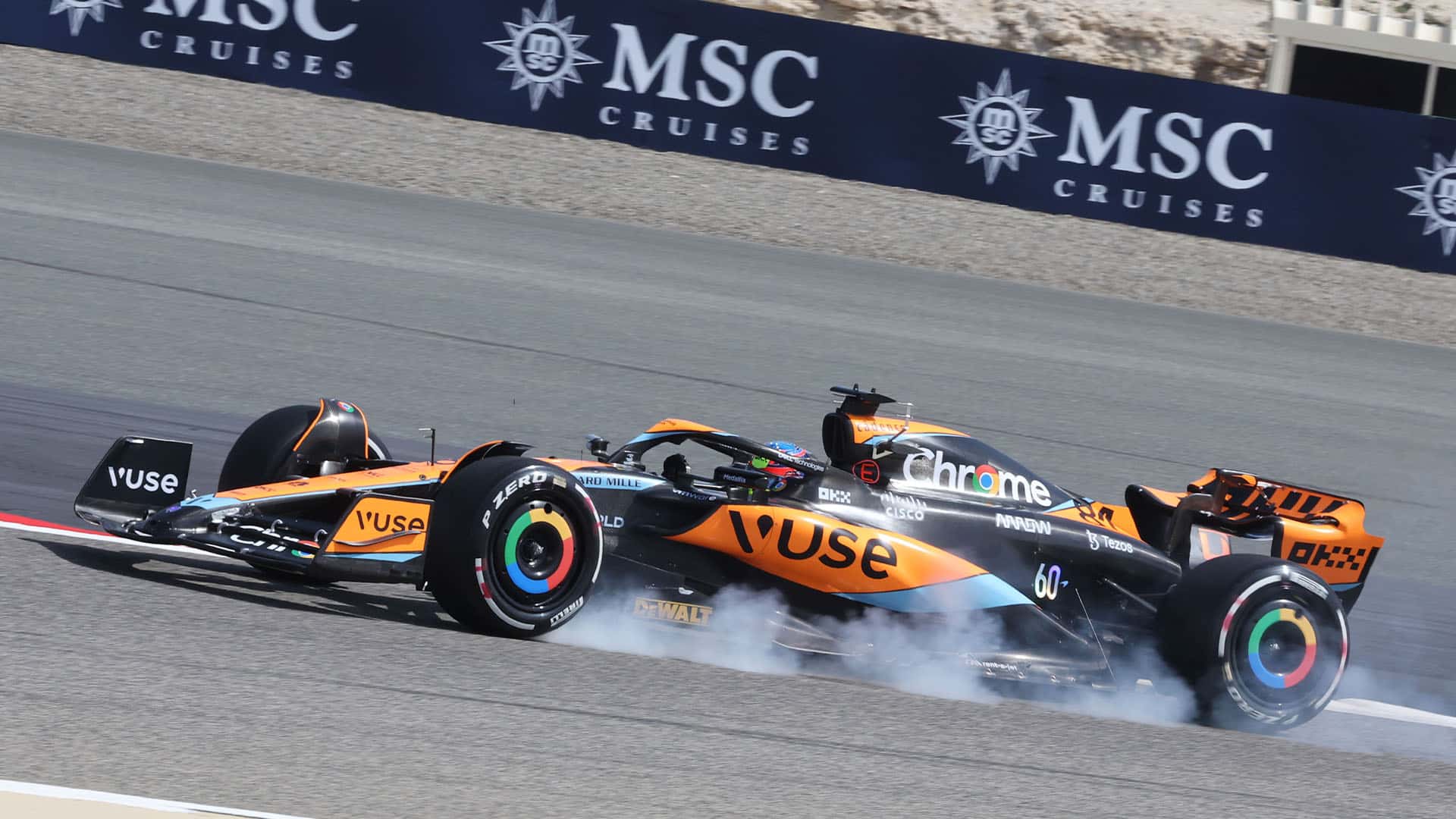At that rate, he’d have very nearly matched his 2013 mileage in just half the time. In a decade, it’s remarkable how much the dynamics around testing have changed.
“You have to look out there - I think it’s the best (test) in Formula 1 ever,” Haas team principal Guenther Steiner asserted. “We’ve seen, how many red flags? Three? Everybody doing the laps… If you go to the lap count of previous seasons, the first test, this never happened before in my opinion.
“I’m so amazed about it. Five years ago every two or three hours there was a red flag. Now we’re all doing the laps, just boom, boom, boom.”
Teams were showing up and completing race simulations on their second days, with Sergio Perez spending his first morning in the Red Bull completing such a distance. McLaren’s troublesome week yielded the lowest mileage of all the teams by some distance at ‘only’ 312 laps – still an average of 104 per day.

McLaren’s Oscar Piastri hits the brakes during 2023 F1 pre-season testing
Alonso’s description of the short running as “unfair” in the context of him having switched teams – despite his vast experience – was a little disingenuous, but the rookies on the grid could be forgiven for making a similar claim.
While Nyck de Vries has one race and a number of practice outings for different teams under his belt, Oscar Piastri has never taken part in a race weekend session and Logan Sargeant was unable to test an old car over the winter like his counterparts. And yet the way that drivers can be so well prepared in other ways was on full display.




